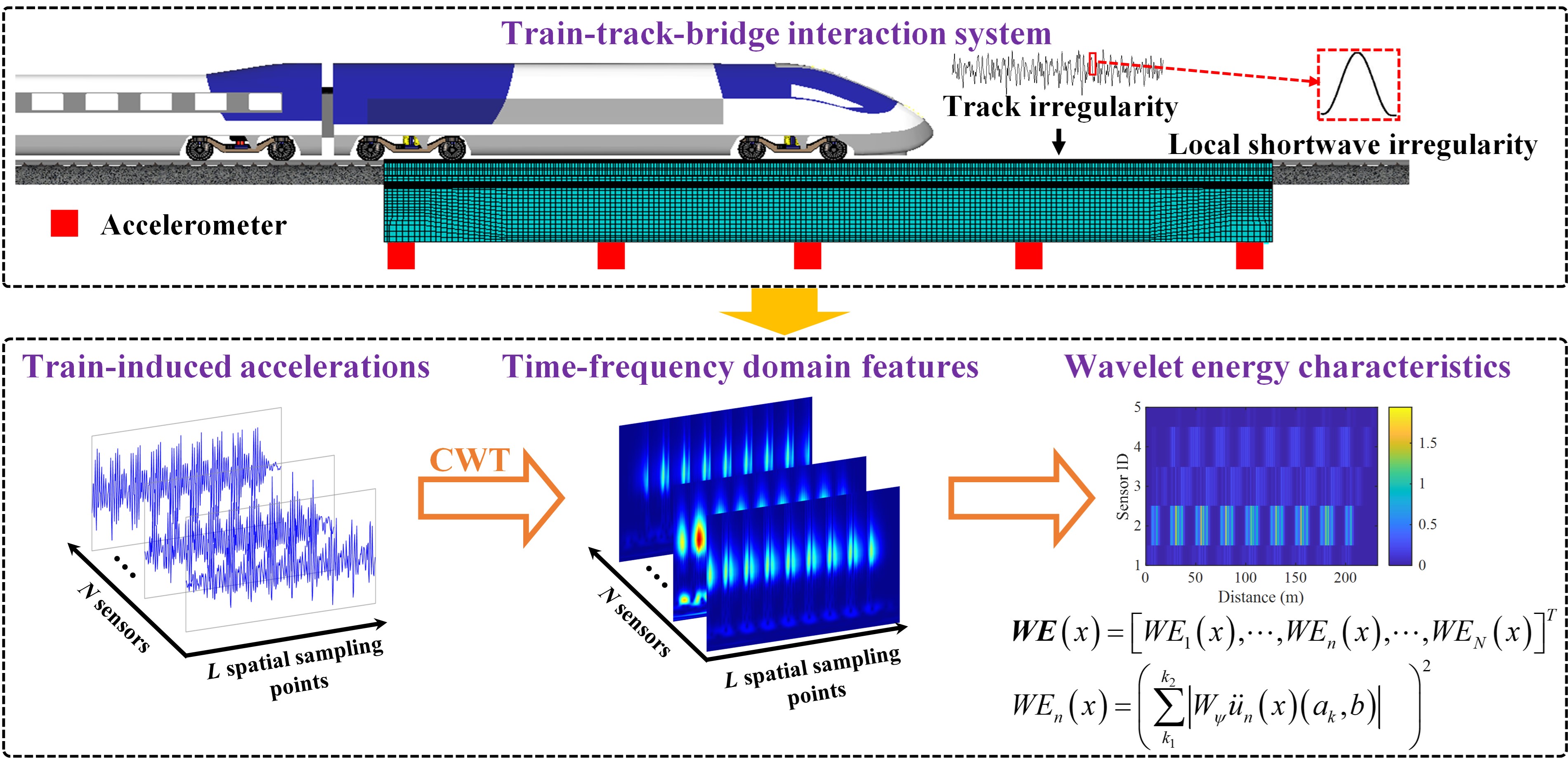Wavelet-based vibration analysis detects local defects in high-speed railway bridge tracks
Published 16 October, 2025
Shortwave rail defects, often less than a meter long, can cause serious problems on high-speed railway networks. These local shortwave irregularities intensify vibrations between wheels, tracks, and bridges, leading to structural fatigue and reduced ride comfort. In a new study, researchers from Harbin Institute of Technology have developed a method to detect such defects by analyzing the bridge's own vibrations. Instead of relying on expensive inspection vehicles, the approach uses wavelet energy features from train-induced accelerations, making high-speed rail monitoring smarter, faster, and more cost-effective.
“Our findings show that bridge vibrations themselves can serve as sensitive indicators of hidden track defects,” says Shunlong Li, the study's corresponding author. “By capturing how different sensors on the bridge respond to subtle, high-frequency vibrations, we can pinpoint damage-inducing irregularities with high confidence, without placing sensors on the train or the track.”
The team employed continuous wavelet transform (CWT) to extract time-frequency features from the bridge vibrations and used a genetic algorithm to optimize the most sensitive frequency interval. “This data-driven, yet physically interpretable technique proved highly robust across different train speeds, axle loads, and even noisy environments,” adds Li.
To validate the proposed method, the researcher team integrated train-track-bridge interaction simulations with full-scale dynamic load testing on a 32-meter steel box girder bridge. This approach achieved over 95% detection accuracy, successfully identifying defects as small as 0.5 mm in amplitude and 1 m in wavelength.
“Notably, the optimal detection frequencies were lower than predicted by classical theory, shedding new light on how bridge dynamics amplify subtle track irregularities,” shares first author Ye Mo. “Furthermore, by fusing signals from multiple sensors, the method demonstrated strong capabilities in identifying multiple defects simultaneously, marking an advancement over traditional single-point detection strategies.”
This study offers a robust and scalable solution for future high-speed rail maintenance. “Our findings not only enhance early-warning capabilities for track defects, but also showcase how existing bridge monitoring systems can be repurposed for intelligent diagnostics, unlocking new value from infrastructure,” says Mo.

Contact author:
Shunlong Li, School of Transportation Science and Engineering, Harbin Institute of Technology, Harbin, China, lishunlong@hit.edu.cn
Funder:
This study was supported by the National Natural Science Foundation of China [grant nos. U22A20230, 52278299] and Fundamental Research Funds for Central Universities [grant no. FRFCU5710051018].
Conflict of interest:
The authors declare that they have no known competing financial interests or personal relationships that could have appeared to influence the work reported in this paper.
See the article:
Y. Mo, S. Li., Local shortwave irregularities detection for high-speed railway bridges using wavelet energy features of train-induced accelerations, Journal of Railway Science and Technology, 2025, https://doi.org/10.1016/j.jrst.2025.06.001.